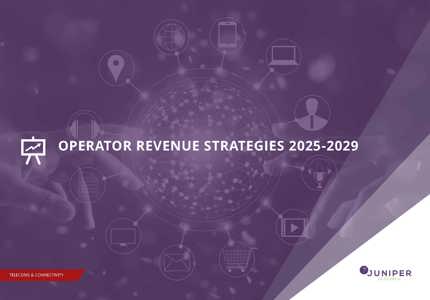NVIDIA Just Revealed What’s Next for AI-RAN: Will Operators Buy In?
Earlier this week, NVIDIA released its annual State of AI in Telecommunications survey, gathering insights from 450 telecom professionals. The results paint a clear picture: AI is transforming the industry, driving improvements in customer experience, employee productivity, and network operations. Notably, nearly 97% of respondents are either adopting or evaluating AI, with 49% already integrating it into their operations.
AI’s influence in telecom is undeniable, but will AI-RAN be the next big leap for operators?
The Adoption of AI-RAN Services: Where Does It Stand?
The survey also addressed the current state of AI-RAN, with the following findings:
- 66% of interviewees confirmed they were investing in or considering deploying AI services on RAN for operational and user needs.
- 53% are investing in using AI to enhance spectral efficiency for RAN.
- 50% are investing in multi-tenant infrastructure which can run both AI and RAN workloads simultaneously.
- 37% say integrating AI into RAN is an investment priority.
The survey indicates that the work of the AI-RAN Alliance is becoming more central to operator AI planning, strategy, and investments. Operators such as Singtel, SoftBank, Swisscom, and Telenor have all been highlighted by NVIDIA, in their multiple comments, as having deployed their first AI compute clusters and are making further investments to expand these compute capabilities.
What is the AI-RAN Alliance?
Founded in February 2024 at Mobile World Congress Barcelona, the AI-RAN Alliance was created by a diverse group, with its 11 founding members being: Arm, DeepSig, Ericsson, Microsoft, Nokia, Northeastern University, NVIDIA, Samsung, SoftBank, T-Mobile, and The University of Tokyo. It now has around 50 members and is focused on how operators can both increase efficiency and capitalise on new economic opportunities. The three key development areas of the AI-RAN Alliance at present are:
- AI for RAN: Focuses on the integration of AI into RAN to advance RAN performance.
- AI and RAN: Aims to create a shared infrastructure between RAN and AI workloads, increasing the overall utilisation of RAN infrastructure resources and opening new monetisation opportunities.
- AI-on-RAN: Focused on enhancing AI applications running at the network edge, allowing operators to offer new consumer and enterprise services.
Juniper Research expects that operators will certainly use AI to optimise and improve the performance of RAN, with AI optimisation allowing operators to improve RAN efficiency and coverage whilst reducing costs. For example, Ericsson states that with its AI-powered RAN it is able to improve to 5G network coverage by 25%. Likewise, the 3rd Generation Partnership Project (3GPP) is seeking to expand standards and research into the use of AI in RAN, with Release 18 including a study on AI and machine learning for the New Radio (NR) air interface. (An air interface is a set of technical specifications and protocols that govern wireless communication between user equipment and base stations.)
However, both AI-RAN Alliance’s and NVIDIA’s view of operators using RAN infrastructure to provide services, such as AI inferencing as well as running RAN workloads, is less certain. SoftBank has gone as far as to announce it will commercially launch its own AI-RAN offering in 2026, but similar announcements are yet to follow. Most likely, this is due to the AI-RAN Alliance only being a year old; however, with operators having struggled to monetise previous services edge services, such as Multi-access Edge Computing (MEC), many operators outside the Alliance will need more clarity and certainty on both technology of AI-RAN and its business model.
AI Inferencing as the Next Major Revenue Source?
The monetisation opportunity for operators, highlighted by NVIDIA and others in the AI-RAN Alliance, is AI inferencing, with other services such as GPU-as-a-Service (GPUaaS) and Platform-as-a-Service (PaaS) also being discussed. NVIDIA recently confirmed that 40% of its revenue comes from AI inferencing and has pitched a monetisation model which would see operators receive a 219% return on their overall investment in AI-RAN infrastructure, based on NVIDIA GB200 NVL2.
AI inferencing is the process of applying a trained AI model to new data, with NVIDIA stating that a RAN server using its GB200 can process up to 25,000 tokens per second. A token is the smallest unit into which text data can be broken down for an AI model to process. This could generate operators $20 per hour, with NVIDIA finding that, if scaled up to 6,000 servers, an operator would be able to expect $1 billion in revenue from their RAN infrastructure.
Importantly, NVIDIA expects AI inferencing services to remain profitable in RAN-heavy modes, meaning that operators do not need to worry about losses from periods of high RAN use. This, coupled with NVIDIA’s and SoftBank’s progress in enabling the orchestration of both RAN and AI inferencing workloads, suggests that AI-RAN could quickly become central to operator revenue over the next five years.
Juniper Research believes that AI inferencing will undoubtedly be a major revenue generator over the next five years, with enterprises continuously exploring and expanding the ways in which they are applying AI models. However, the key question of AI-RAN is whether inferencing on the edge will become a focus or will inferencing remain concentrated to datacentres.
So, what can edge AI inferencing be used for? After the struggles of 5G monetisation, operators will likely be reluctant to make large-scale investments with the idea of monetising hypothetical use cases, such as extended reality and autonomous vehicles. Yet these are the kinds of use cases which have been highlighted by NVIDIA and SoftBank in their research.
In their trial, NVIDIA and SoftBank impressively showed that their AI-RAN technology could support autonomous vehicle remote support and robotics control. We don't expect that edge AI inferencing will become the norm for autonomous vehicles and robotics, with many original equipment manufacturers (OEMs) focused on expanding the AI inferencing capabilities of the equipment itself rather than relying on connectivity. Likewise, demand for edge AI inferencing from smartphones is unlikely to become a major source of demand over the next five years, with smartphone manufacturers currently focused on upgrading their chips to handle AI inferencing on-device.
However, this is not to say tnat there are no use cases and opportunities for monetisation.
One opportunity we believe could emerge is the use of edge AI inferencing by IoT devices. Whilst there is a trend towards expanding the on-device AI capabilities of IoT devices, many devices will remain limited, meaning that AI inferencing will need to occur off-device. Cloud AI inferencing restricts the ability of these devices to respond in real-time, potentially creating a market for edge AI inferencing and one that operators already have a market presence in. This, and similar use cases, could form the backbone of the AI-RAN monetisation model in the future, although large deployments on private networks are likely to rely on on-premises edge AI inferencing.
Ultimately, we expect use cases that require edge AI inferencing to emerge over time, and that operators could be the best candidates to meet these services. However, it is important that operators do not get caught up in the hype of generative AI use cases. The primary focus of enterprises remains machine learning and its use cases such as real-time decision making, meaning these use cases could be an ideal target for edge AI inferencing. To successfully attract enterprise deployments for these use cases operators will need to strengthen security, as many enterprises will have hesitancy about exposing these systems to public cellular networks.
AI-RAN and edge AI inferencing remain interesting and innovative technologies, which one day could allow operators to further expand their business beyond connectivity. However, more work needs to be done to identify tangible use cases and business models which can provide the return on investment previous forays into similar edge services have lacked.
Alex is a Senior Research Analyst within Juniper Research’s Telecoms & Connectivity team, focusing on the latest developments in operator and telecommunications markets. His recent reports have covered topics such as OTT Business Messaging, MVNO-in-a-Box, and IoT Roaming.
Latest research, whitepapers & press releases
-
 ReportDecember 2025
ReportDecember 2025AI Agents for Customer Experience Platforms Market: 2025-2030
Our comprehensive AI Agents for Customer Experience Platforms research suite comprises detailed assessment of a market that is set to disrupt mobile communications. It provides stakeholders with insight into the key opportunities within the AI agents for customer experience platforms market over the next two years.
VIEW -
 ReportDecember 2025Fintech & Payments
ReportDecember 2025Fintech & PaymentseCommerce Fraud Prevention Market: 2025-2030
Our eCommerce Fraud Prevention research suite provides a detailed and insightful analysis of this evolving market; enabling stakeholders from financial institutions, law enforcement agencies, regulatory bodies and technology vendors to understand future growth, key trends, and the competitive environment.
VIEW -
 ReportNovember 2025Telecoms & Connectivity
ReportNovember 2025Telecoms & ConnectivityeSIMs & iSIMs Market: 2025-2030
Juniper Research’s eSIMs and iSIMs research suite offers insightful analysis of a market set to experience significant growth in the next five years. The research suite provides mobile network operators (MNOs), original equipment manufacturers (OEMs), and eSIM management and platforms vendors with intelligence on how to capitalise on the market growth, and guidance on how eSIM-only devices and sensors, SGP.42, in-factory provisioning, and iSIMs will change the competitive landscape.
VIEW -
 ReportNovember 2025Fintech & Payments
ReportNovember 2025Fintech & PaymentsModern Card Issuing Platforms Market: 2025-2030
Our Modern Card Issuing Platforms Market research suite provides a detailed and insightful analysis of this evolving market; enabling stakeholders from banks, financial institutions, fintech companies, and technology vendors to understand future growth, key trends, and the competitive environment.
VIEW -
 ReportNovember 2025Fintech & Payments
ReportNovember 2025Fintech & PaymentsDigital Wallets Market: 2025-2030
Our digital wallets research suite provides detailed analysis of this rapidly changing market; allowing digital wallet providers to gain an understanding of key payment trends and challenges, potential growth opportunities, and the competitive environment.
VIEW -
 ReportOctober 2025Fintech & Payments
ReportOctober 2025Fintech & PaymentsDigital Identity Market: 2025-2030
Juniper Research’s Digital Identity research suite provides a comprehensive and insightful analysis of this market; enabling stakeholders, including digital identity platform providers, digital identity verification providers, government agencies, banks, and many others, to understand future growth, key trends, and the competitive environment.
VIEW
-
 WhitepaperDecember 2025Telecoms & Connectivity
WhitepaperDecember 2025Telecoms & ConnectivityHuman + AI: Drivers of Customer Experience AI Agents in 2026
Our complimentary whitepaper, Human + AI: Drivers of Customer Experience AI Agents in 2026, examines the key drivers of the AI agents for customer experience platforms market in 2025.
VIEW -
 WhitepaperDecember 2025Fintech & Payments
WhitepaperDecember 2025Fintech & PaymentsBeyond Chargebacks: The True Cost of Fraud for Digital Commerce
Our complimentary whitepaper, Beyond Chargebacks: The True Cost of Fraud for Digital Commerce, examines the state of the eCommerce fraud prevention market; considering the impact of evolving digital fraud strategies, including key trends such as identity theft, account takeovers, chargebacks, policy abuse and friendly fraud.
VIEW -
 WhitepaperNovember 2025Telecoms & Connectivity
WhitepaperNovember 2025Telecoms & ConnectivityeSIM-only Devices: The Impact on Operators, Consumers, and IoT
Our complimentary whitepaper, eSIM-only Devices: The Impact on Operators, Consumers, and IoT, explores the challenges and opportunities for the three segments, with a particular focus on eSIM-only smartphones and SGP.42.
VIEW -
 WhitepaperNovember 2025Fintech & Payments
WhitepaperNovember 2025Fintech & PaymentsUnlocking the Next Stage of Growth for Modern Card Issuing Platforms
This free whitepaper analyses key trends shaping the modern card issuing space, and the ways in which modern card issuing platforms can capture growth.
VIEW -
 WhitepaperNovember 2025Fintech & Payments
WhitepaperNovember 2025Fintech & PaymentsTop 10 Fintech & Payments Trends 2026
Fintech is evolving fast. From stablecoins to agentic AI, our annual guide reveals the shifts redefining payments, digital identity, and the future of money in 2026. Download your copy today.
VIEW -
 WhitepaperNovember 2025Fintech & Payments
WhitepaperNovember 2025Fintech & PaymentsDigital Wallets: Empowering Financial Inclusivity
Our complimentary whitepaper, Digital Wallets: Empowering Financial Inclusivity, examines the state of the digital wallets market; considering the impact of digital wallets on different geographies, how they are shaping the modern payments landscape through lower transaction fees and promoting financial inclusivity for underbanked populations, and how they are competing with established payment methods.
VIEW
-
Telecoms & Connectivity
Travel eSIM Margins Under Pressure as Revenue per Gigabyte Falls 10% Globally in Two Years
December 2025 -
Telecoms & Connectivity
AI Agents to Power 1,000% More Customer Interactions for Enterprises Globally by 2027
December 2025 -
IoT & Emerging Technology
Global D2C Revenue Set for $370 Million Surge, But Satellite Operators Should Not Chase Full MNO Status
December 2025 -
Fintech & Payments
Digital Goods Fraud to Cost eCommerce Merchants $27 Billion Globally by 2030 as AI Tools Accelerate Attacks
December 2025 -
Fintech & Payments
AML Adoption to Hit 3.8 Million Businesses Globally by 2030, With Europe at the Forefront
November 2025 -
Telecoms & Connectivity
eSIM Connections to Grow 300% Globally in Next 5 Years, as China Presents Instant Opportunities
November 2025
























